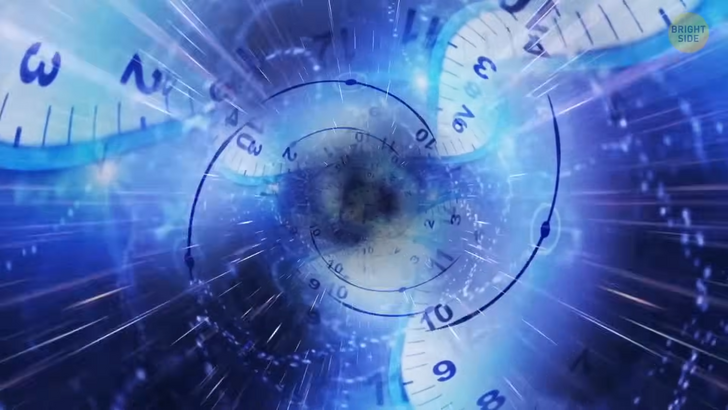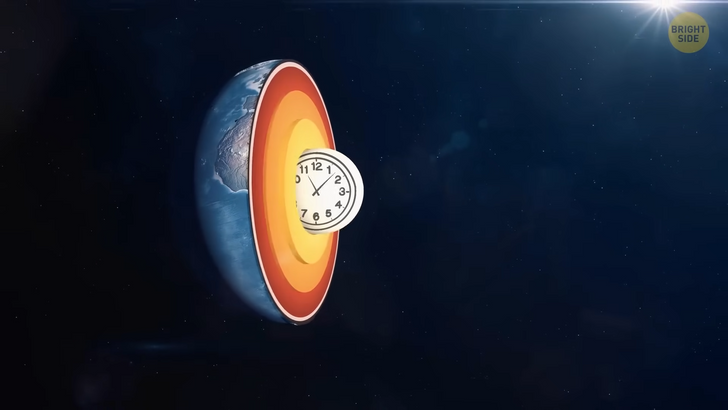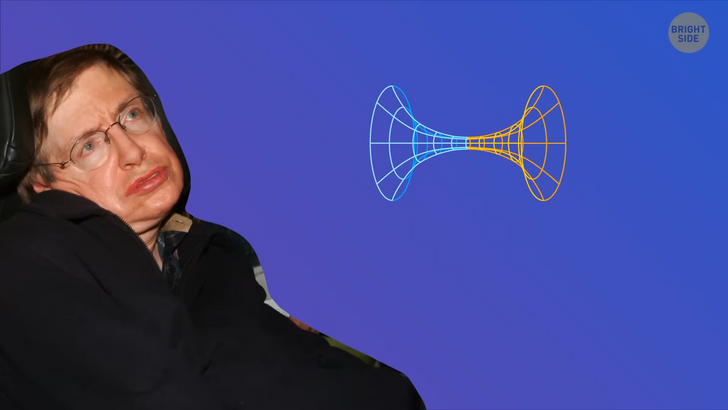12 Life Twists That Feel Like a Rollercoaster With No Seatbelt


Okay so you’ve seen the movies and read the books on time travel. Most of them tell stories about entering some futuristic boxes — and in the blink of an eye, you’re in some different epoch. For now, this is just sci-fi. But there are ways to make time travel possible — at least theoretically. We just don’t have the technology figured out yet.
For starters, time travel to the future could be achieved by traveling at high speeds. But not just “getting a ticket on the super highway” kind of speed. This is based on Einstein’s theory of special relativity. It explains that time slows down for objects that move at really high speeds. And the good news is scientists have already tested this theory, and it looks promising. They did it with the help of two identical clocks. One was placed on a jet, and one stayed on the ground.

They found that the clock on the jet ticked slower than the one on the ground because of how fast the jet was moving. The faster an object is moving, the more time will slow down for it. Currently, the fastest speeds achieved by human technology are seen in a special type of particles called neutrinos. Some of these can move at almost the speed of light. At these speeds, one second for the protons is equivalent to 11 months for us.
We might be able to time travel to the future with the use of gravity, too. This idea is also based on Einstein’s findings, namely, his theory of general relativity. This theory explains that the stronger gravity is, the more slowly time moves. This means that as you get closer to the center of Earth, the strength of gravity increases. If you think about it like that, time actually passes more slowly for your feet than your head! Is that why I’m always late for stuff? Good excuse.
This effect has been measured, too, with the help of the same strategy with two identical clocks. Scientists placed them on shelves at different heights and measured the rate of ticking. The clock on the lower shelf ticked more slowly because it experienced a slightly stronger gravity. But this option comes with a catch.
To be able to travel to the far future, you’ll need to find a place with extremely strong gravity, like a black hole. It’s a point in space where gravity has so much force that even light cannot escape it. There, gravity becomes so intense that matter gets squeezed into a tiny space. The closer you get to a black hole, the more slowly time moves. However, traveling via a black hole is very dangerous. Mostly because it’s a one-way ticket. Once you cross its edges, there’s no coming back.

Fun fact: the GPS systems we use on our phones and in our cars already have to account for time dilation effects in order to work properly. That’s because of the speed of the satellites they use and the gravity they feel here on Earth. Without these corrections, your phone’s GPS wouldn’t be able to pinpoint your location on Earth very precisely.
Meanwhile, the third option has less to do with the Universe’s unknown forces and more to do with our own bodies. Scientists are trying to find ways to time travel to the future by slowing down the body’s own processes. It’s not “time travel” per se: you wouldn’t technically be going anywhere.
But if your body stays put for a long period of time, you could eventually wake up in the future. Some animals, like bears and squirrels, can slow down their metabolism during hibernation, which means they don’t need as much food and oxygen to survive.

Specialists are trying to figure out if humans can do the same thing. They are working on ways to make people go into a short-term hibernation for a few hours to begin with. This could be helpful for medical emergencies, too, in order to help a person before they can safely get to the hospital. In 2005, scientists were able to slow down the metabolism of mice by exposing them to a small amount of special gas. However, when they tried to do the same thing with larger animals, it did not work as effectively.
Our fourth option of traveling through time is really unique. It involves a special type of shortcuts that may exist in our Universe, called wormholes. Before we move on, let’s try to understand what they are. You’ll need to picture two balls and a trampoline. If there’s no pressure applied on the trampoline, it stays flat.
Now imagine the two balls placed on the trampoline symmetrically. If you look at them from this perspective, there’s no possibility of them ever touching. But if you put enough pressure on the trampoline between the two balls, this flexible fabric can stretch so much that the two objects might potentially touch each other.

The same thing happens with stars in different star systems. They are big enough to curve space around them. That’s why most planets tend to orbit around a star. The tunnel between those two points would be a wormhole. These wormholes could be used to travel long distances, like a billion light years, or even visit different times.
Many scientists, like Stephen Hawking, think that wormholes might appear and disappear but be very small — smaller than atoms. The problem is that we don’t know how to catch one and make it bigger so that people can use it. This would take a lot of energy, and we don’t know if it’s even possible.
Some astronomers say that even if we could find a wormhole and enter it, it would rapidly collapse on itself. Even the tiniest bit of extra mass (like that of our bodies, for example) can result in the wormhole slamming shut, like a rubber band that’s been stretched too much.

The fifth solution for time traveling was proposed by an American physicist named Ron Mallett. It involves one resource that we know for sure is abundant in the Universe: light! The scientist proposed a theory about time travel that would use a rotating cylinder of light. He believes that if something was dropped inside this swirling cylinder, it could be moved in both space and time, similar to how a bubble moves when you swirl it with a spoon in your coffee.
According to Mallet, the right shape of the cylinder could allow for traveling to both the past and the future. The physicist has been trying to raise money for an experiment to test his theory. This experiment involves dropping tiny particles called neutrons through a circular arrangement of spinning lasers. However, other scientists say Mallet’s theory is impossible, and there’s no need to test it further.
Even if we eventually figured out a way to travel back to the past or to the future, would it be safe? Scientists have been talking about a problem called the “paradox of time travel” for a long time. The main question is what would happen if you went back in time and did something that changed the future. However, a new study from researchers from the University of Queensland says that this problem might not be real after all. The scientists have done some calculations and found out that even if you had changed something in the past, the timeline would still end up the same way.

Another variation of this problem is called the “grandfather paradox.” Imagine going back in time and preventing your own grandfather from having offspring. Come to think of it, it automatically means you shouldn’t exist in the first place. If your grandparents didn’t have your parents, how can you exist after all?
Well, these days, scientists are certain that even if you did experience something like that, you’d still exist in the present. That’s because the timeline that already exists has a way of adjusting itself, regardless of where people are in time and what they do. Or, somehow get one point twenty-one gigawatts and a DeLoren and make like Marty McFly!











